Guided Reading: Presentation
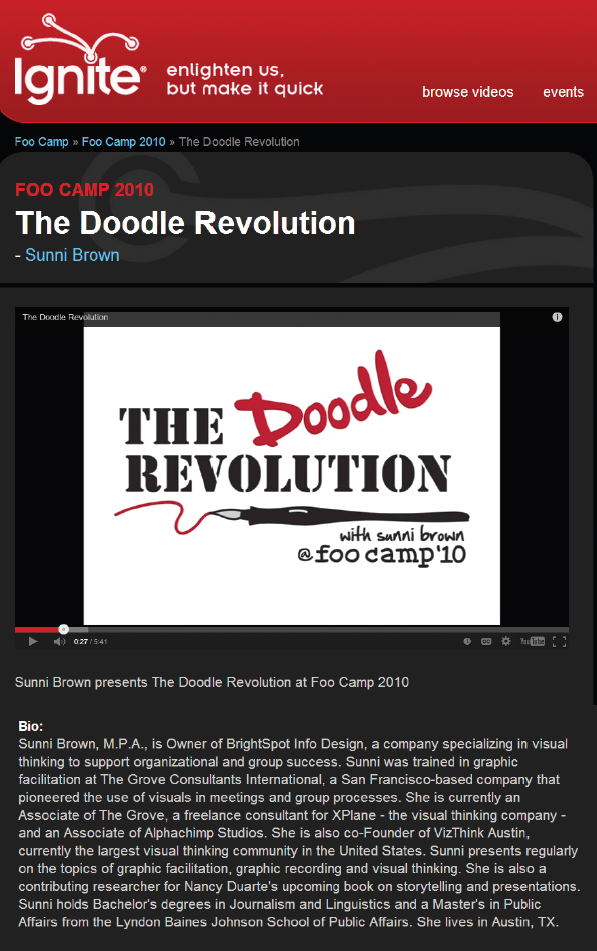
Sunni Brown
From The Doodle Revolution
Sunni Brown is a visual thinker, researcher, and self-described “large-scale Infodoodler and Leader of the Doodle Revolution” who believes in the power of doodling. She argues that focused doodling, in any scenario, gets our minds and memories working better. Brown’s academic background is in journalism and linguistics and she holds a master’s degree in public affairs. She lives in Austin, Texas, owns a design company, works as a consultant and creative director, and is the coauthor of Gamestorming, a book on innovation and visual thinking.
Brown gave a talk at an Ignite event in which she makes her case for the Doodle Revolution. Ignite hosts events around the country where speakers talk about things (in their lives, in their work, etc.) that they care about most. An Ignite talk can be no longer than five minutes, and is supported by twenty slides that advance every fifteen seconds. In her presentation (which you can view in its entirety here), Brown uses images and statistics to support her points on the value of doodling. The Doodle Revolution is presented here by permission of Sunni Brown, Infodoodler-in-Chief, Author and Leader of the Doodle Revolution, http://igniteshow.com/videos/doodle-revolution.
GUIDED READING Annotations
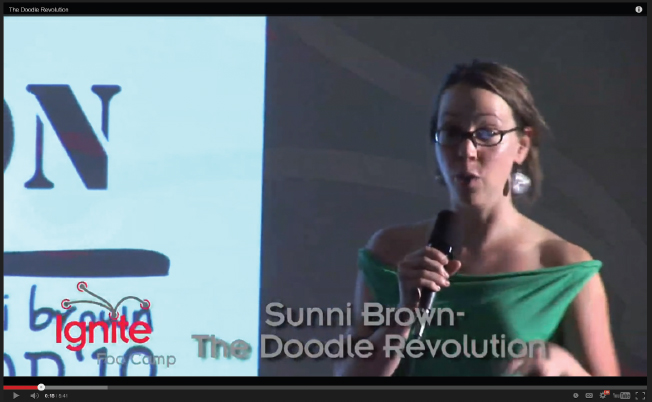
[Transcript]
“I am what I refer to as a large-scale strategic doodler. So people pay me to track auditory content and display it to them in a visual language format. And I have a series of “whoa” moments when I do this.”
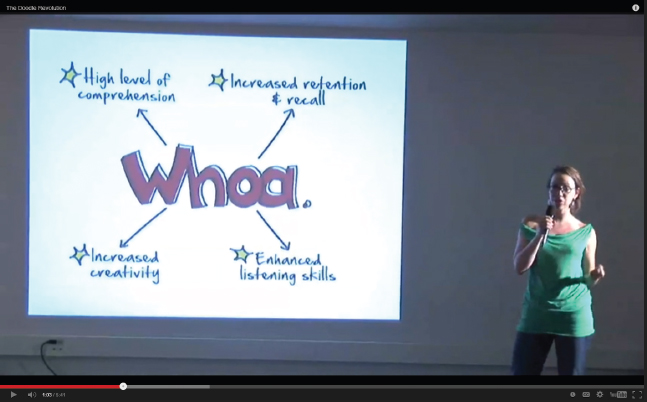
[Transcript]
“I have a significantly high level of comprehension of the information that I doodle. I also have increased attention and recall of that content, weeks and months later, and I can easily immerse myself back into it. Additionally, I’ve noticed that when I do strategic doodling, I have increased creativity and I can make solutions to problems that are even surprising to me. And finally, my listening skills are like, ninja-like. I can discern immediately what’s relevant and what’s not relevant.”

[Transcript]
“So I have this series of ‘whoa’ moments, and simultaneously I notice that our society frowns on doodling in learning environments. In the board room, in the situation room, and in the classroom. So, I find that problematic. . . .”
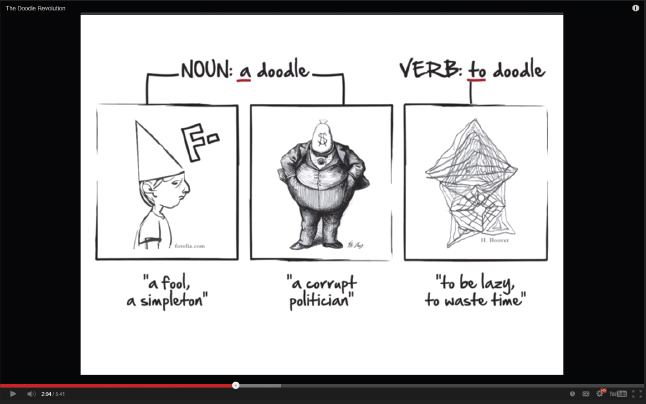
[Transcript]
“I discovered five interesting things. One of them is that there is no flattering definition of a doodle. In the seventeenth century, a ‘doodle’ was a fool; in the eighteenth century, a ‘doodle’ was a corrupt politician; and in the modern-day society, in the 1930s we see the emergence of our verb ‘to doodle,’ and it means to be lazy or waste time. . . . [Later] there was a period in time when the ballpoint pen came into play, and people had access to mass-produced pulp paper. So they actually were kind of like flipping around, just like, ‘wee, look at these tools we have!’ But [doodling] wasn’t necessarily meaningful at that point in time.”

[Transcript]
“In the 1930s, Freudianism was at its height, and people believed that you could actually psychoanalyze someone based on their doodles, and dig into the recesses of their freaky psyches. And naturally, people have an aversion to that. [laughter]
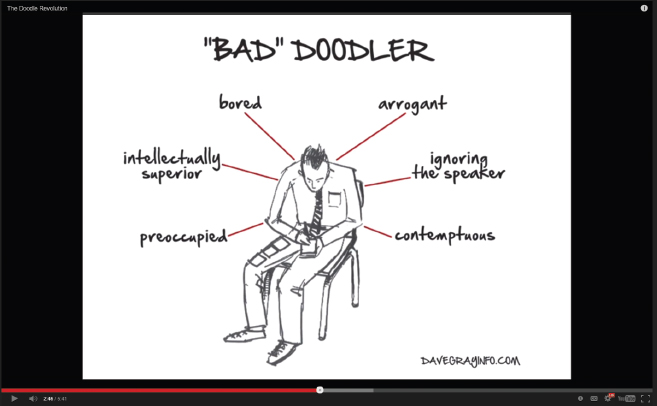
[Transcript]
“And finally . . . the physical gesture of doodling gives people the impression that you’re not present, right? So, whenever there’s a speaker, um, not me, but if there were another speaker [up here] they would think that it was rude and that you’re not paying attention.”
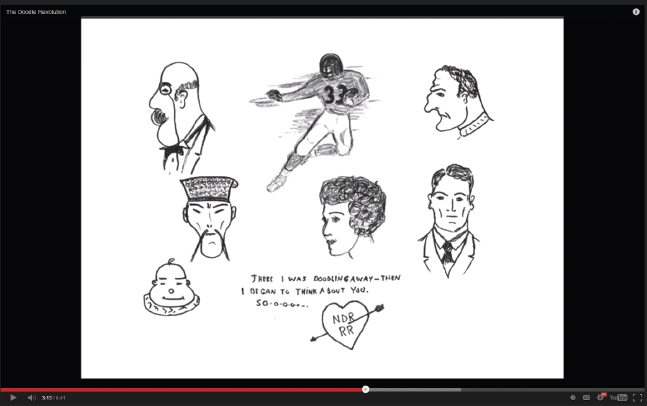
[Transcript]
“. . . Also, in our society, we don’t think that national leaders doodle. We don’t think it’s appropriate. But that’s patently false. These are Ronald Reagan’s doodles. . . . Every president, ever, in our history has been a doodler. Republicans are actually more prolific doodlers than Democrats, which I find interesting.”
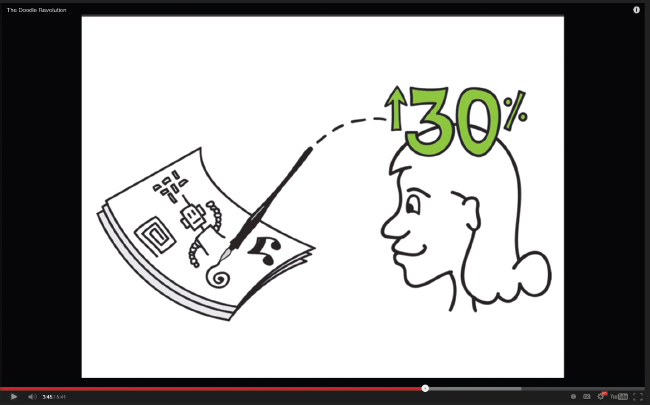
“Here’s a better definition of ‘doodle,’ which is: scribblings to help a person think. And that definition came out of a 1936 movie called Mr. Deeds Goes to Town. . . . So what do we know about the doodle? We know that doodlers retain 30% more information than non-doodlers.”
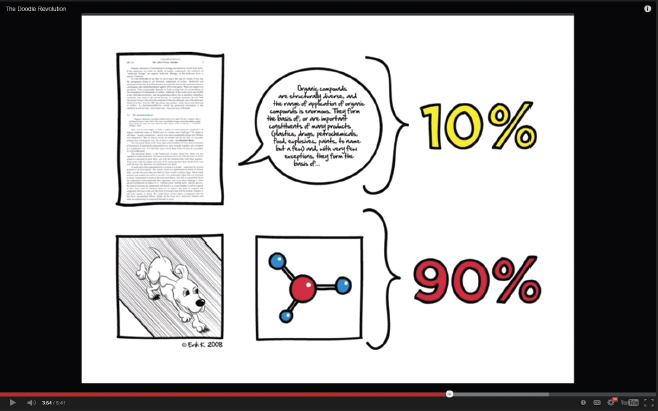
[Transcript]
“We also know that there’s a phenomenon called the “picture superiority effect,” which means that after this event is over, you’re only going to remember 10% of what I say, but you’re going to remember 90% of what I showed you. And so when you’re doodling and you’re creating pictures that you get to reflect back on, it actually is a way of processing and retaining information. . . . So the doodle’s not a joke, okay? Ya get it?” [laughter]
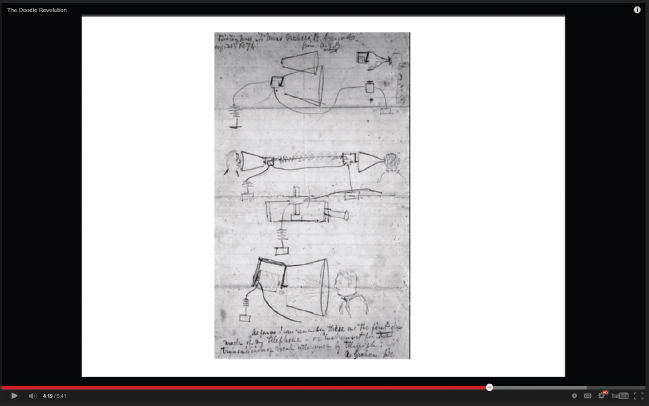
[Transcript]
“We also know that almost every genius inventor and innovator and scientist and screenwriter and poet, they all use sketches and doodles in order to get to a solution they wouldn’t otherwise have gotten to. This is Alexander Graham Bell’s sketches of the telephone.”
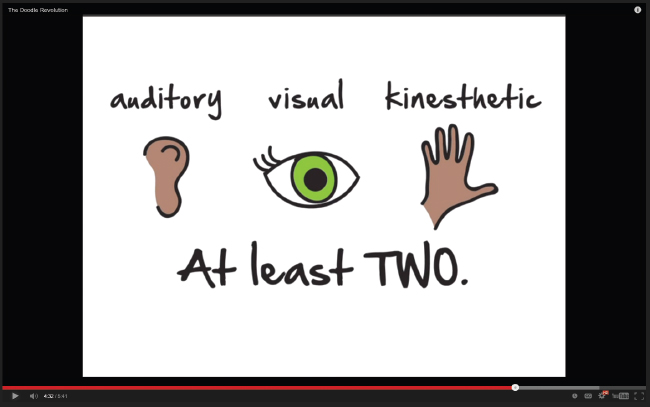
[Transcript]
“There are three learning pathways, primarily, that we all have. . . . In order to lock in information, you have to engage at least two. . . . Or, you have to have an emotional experience coupled with one of those things. “
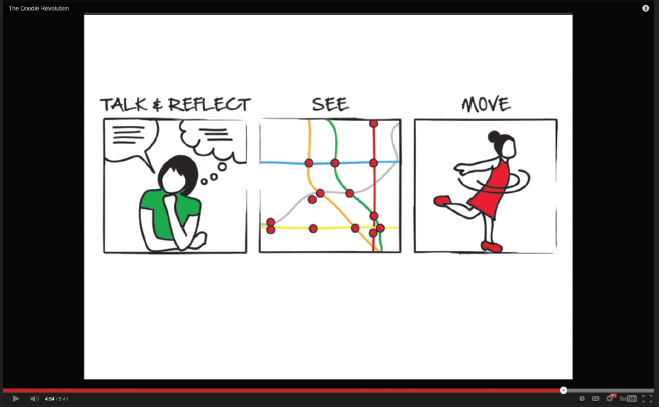
[Transcript]
“. . . These are the three things that you have to do in order to engage the pathways. And I think the reason why the doodle is so powerful for so many people around the world and throughout time is that it actually employs all three of your learning pathways simultaneously.”
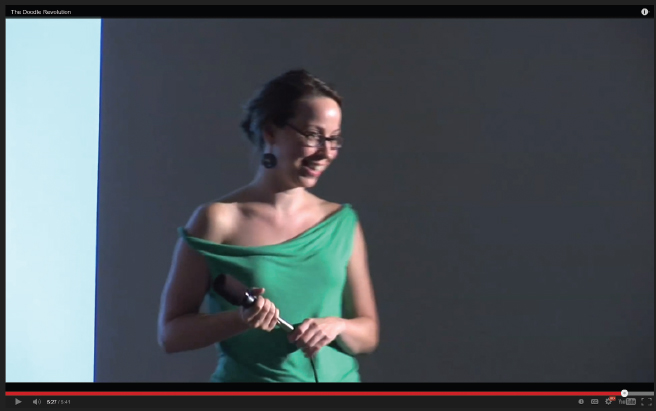
“. . . I think that the doodle is actually most appropriate in those situations where society actually believes it to be the least appropriate, which is where you have an informationally dense situation, and people are accountable for learning that information. So I say bring on the freaking doodle revolution.” [laughter, applause].